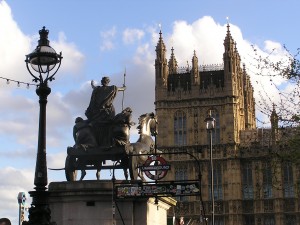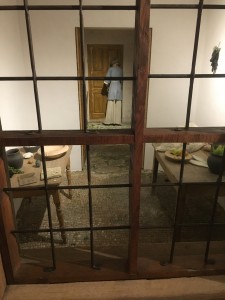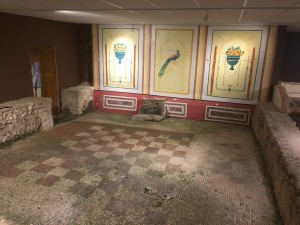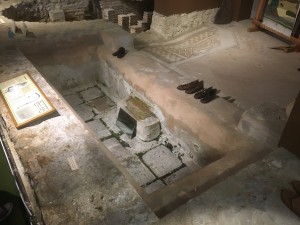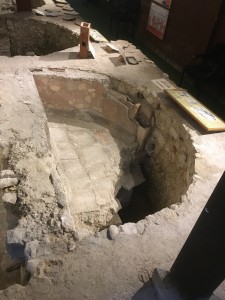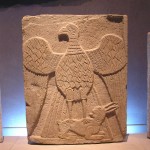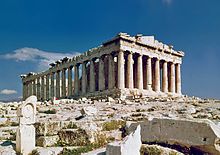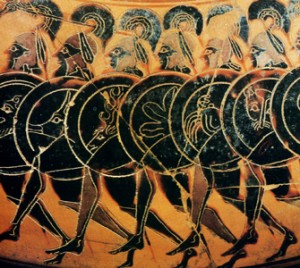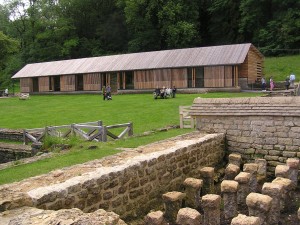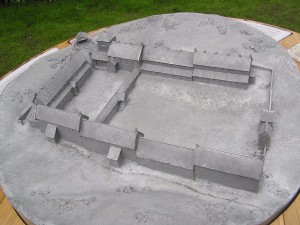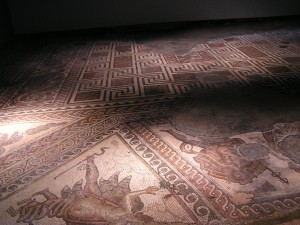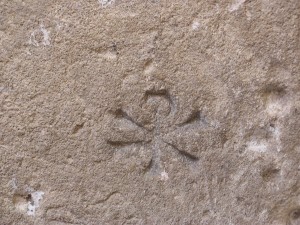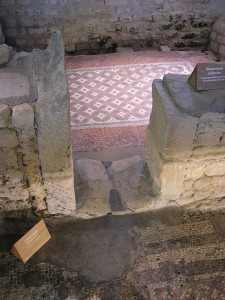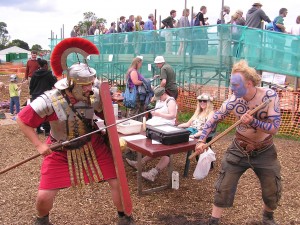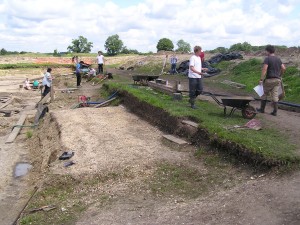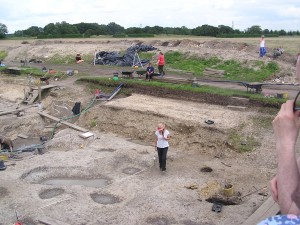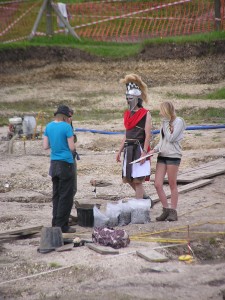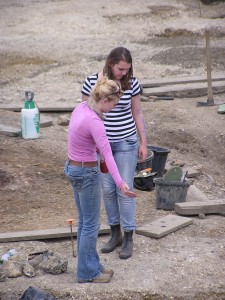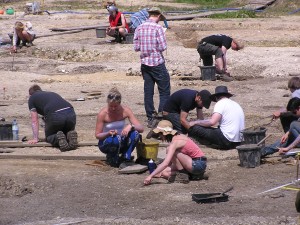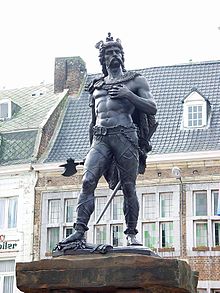When I first taught Classics in a prep school, I had been asked by a headmaster friend to provide cover in an emergency. I felt no need to question whether lessons in the Classics were a waste of my own and my pupils’ time, or whether I was complicit in such crimes as the perpetuation of elitism, privilege and pointless tradition. The job was there, and I took it.
My passion for the Classics – embracing Latin and Greek grammar, mythology and Ancient History – dates from childhood and is something I was itching to share. All that pent-up enthusiasm made my lessons, for me at least, not only enjoyable but also immensely rewarding, as if I were passing on a torch. As a result I have been ‘covering in emergencies’, at a series of prestigious prep schools, ever since. Teaching is no longer just ‘a job’ for me. I really do feel as though I am on a mission.
Whilst many pupils are soon won over and able to see ‘the point’ of their Classical studies, there are always a few who are harder, or impossible, to convince. Sooner or later, the dreaded ‘D’ word, surely picked up from sceptical parents, will spring to their lips. So what is the point, they ask, of learning a ‘dead’ language?
My old school friend, the author Simon Winder, is such a sceptic. I thought he rather enjoyed our lessons with the legendary ‘Bird’ Raven, but then I read: ‘On a conservative estimate I must have spent over a thousand hours of my childhood in Latin lessons … In an adult spasm of masochism I recently bought Teach Yourself Latin which, to my total dismay, showed that eight years of Latin lessons had actually only got me about twenty-five pages into a three-hundred-page book’ (Germania, London, 2010, p.9).
However, my battered copy of our hand-written revision notes (only someone like me would have kept it) includes such arcana as Gerunds, Gerundives and Deponent Verbs, proof that, by the age of eleven, ‘Bird’ had already steered us to what is now GCSE level – but Winder always loved to exaggerate for comic effect.
I do not believe that Latin can truly be described as ‘dead’ when it survives, in heavily adapted and accented forms, in all modern European languages, including our own. A striking instance is the conjugation of the verb ‘to be’ (sum, es, est, sumus, estis, sunt), which survives virtually intact in, for example, modern French (suis, es, est, sommes, êtes, sont). The differences are a mere matter of spelling and pronunciation, adapted to local palettes in the intervening millennia. (Incidentally, the last sentence alone contains eight borrowings from Latin.)
It has therefore often been said in defence of the Classics that they smooth the path to learning these more obviously useful or relevant languages, or to making sense of those with which one is unfamiliar. I believe this is undeniably true. Italian, for example, comes very easily to a Classicist.
A colleague who asked his pupils to write a defence of Latin showed me the response of a particularly sharp-witted boy who had been on a trip to Romania. He claimed to have recognised at once the meaning of a sign that read ‘Nu pecunie preste noapte’, for it was merely a garbled form of the Latin ‘nulla pecunia per noctem’, no cash overnight.
In justifying a Classical education, I prefer to avoid the usual arguments, however convincing, about linguistic skills and how helpful it is with one’s English grammar and vocabulary. I once taught the son of a well-known adventurer and survival-expert who regularly questioned his need to learn a ‘dead language’, since he was bent on a career as a bush-pilot. The intellectual case for Latin was hardly going to convince a young child. Eventually I wrote in his end-of-year report: ‘Johnny may not need to know Latin in his future career as a bush-pilot, but it might make him a more interesting person’.
For Johnny’s brush with an ancient language may turn out to be the greatest intellectual challenge of his life and he will surely be the better for it. I have found in my various schools that the Classicist is still held in some esteem by colleagues – the geographers, the chemists – who are in awe of the apparent complexity of his subject and apt to consult him on general matters as if he were an oracle. The Classics are worth keeping for that reason alone.
I take as my model the Classics master at Oundle in the late 19th century, of whom it was said: ‘He teaches Classics, but he teaches much more than Classics: from him the boys get their inspiration and ideals’. There is nothing else on the curriculum that is so broad in its remit. When the grammar is taught well, it should be integral to the wider study of Classical civilisation, with all sorts of moral lessons adduced.
Stories of virtuous Romans like Horatius, Mucius Scaevola and Cloelia are all on the Common Entrance syllabus, and even the youngest children can appreciate the wisdom of well-known Latin quotations like ‘carpe diem’ (Horace) and ‘festina lente’ (the Emperor Augustus), both neat illustrations of the imperative. If education is about introducing children to worlds beyond their own, the Classical world is the broadest horizon they will see.
The father of ‘Utilitarianism’, Jeremy Bentham, who embarked on his own Classical education at the age of three, nevertheless opposed it for others, apparently because he regarded the ancients as immoral. Thus ‘while men are acquiring false words they are acquiring false ideas of things’ (Brian W. Taylor, ‘Jeremy Bentham and the Education of the Irish People’, The Irish Journal of Education, 1980, xiv, i, pp.22-3).
Bentham’s position was somewhat extreme – he considered poetry, in any language, to be ‘useless’ – but the ‘Utilitarian’ argument against the Classics is the one most commonly voiced today, as by the blogger Donald Clark (‘Latin is an old fossil that became stuck in the curriculum, not because of its intrinsic worth, but because of snobbery and tradition’ – http://donaldclarkplanb.blogspot.com/2011/02/10-reasons-not-to-learn-latin.html). Why in that case expose children to poetry or any literature that has no obviously useful purpose? Surely ‘education’ is about more than equipping the young to be drones in the workplace; and if the aim is that they should be able to count and express themselves, then Latin is likely to be more ‘useful’ than, say, Geography.
Clark considers the classical education to be a ‘waste of time’ and its advocates elitist snobs, yet the less it is taught, the more elitist it will become. It is not the fault of the private schools that it has largely been abandoned in the state sector, nor that the Classicist is perceived as almost the definition of a learned man or woman. The Latin word classicus means, after all, ‘front-rank’, ‘exemplary’ or ‘high-class’. As the arriviste knows all too well, Classicists stand in the front rank of educated men and women.
The footballer David Beckham, for example, has at least three Latin inscriptions among his many tattoos, and has had his children educated in Latin at exclusive schools. According to the College of Arms website, new grantees of arms like Sir Christopher Frayling and Sir George Martin almost invariably opt for Latin mottos to accompany their escutcheons, despite the advice of the heralds that these can be in any language (https://www.college-of-arms.gov.uk/news-grants?start=5).
It is striking, too, how many of the leading multi-national companies have names that hark back to Classical Greece or Rome (Amazon, Nike, Visa, Oracle etc.), no doubt as much because of their allure as because of their being universally recognisable. At my son’s nursery school there are (unrelated) boys called ‘Jupiter’ and ‘Priam’. Like it or not, the Classics continue to command considerable prestige.
The main purpose of education is surely to introduce the young to the accumulated knowledge and wisdom of their elders. Far from being of mere antiquarian interest, ancient Greece and Rome have shaped our civilisation. Their legacy is all around us and deep inside us. The clinching argument, perhaps, is that through the study of the Classics we connect with our roots in the ancient world. In Peter Green’s neat phrase, it is a pathway to understanding the ‘long perspective of the past’ that has led to ourselves (https://www.cornellcollege.edu/classical_studies/amici/classicaliowa/greeninterview.shtml). Mary Beard has written (Confronting the Classics, London, 2014, pp.3, 9) of the ‘terrifying fragility of our connections with distant antiquity … the fear of the barbarians at the gates and that we are simply not up to the preservation of what we value’. The Classical languages and literature constitute ‘an essential and ineradicable dialect’ of our culture which cannot be amputated from the modern world, unless – she warns – there is to be ‘a dark future of misunderstanding’.
In his Elegy written in a Country Churchyard (once a standard of English literature, no doubt little read today), Thomas Gray reflected that the ‘rude forefathers of the hamlet’ in their neglected graves might, in other circumstances, have been distinguished men of action or of letters,
But Knowledge to their eyes her ample page
Rich with the spoils of time did ne’er unroll …
I suspect that most people would now struggle with Gray’s Elegy and with the vocabulary and allusions of the classically-educated poet. Are words like ‘jocund’ and ‘sequester’d’ readily understood today, and who is able to identify Hampden, Milton or, indeed, the Muse? Gray pre-supposes an audience who are as well-educated as himself. The child who is taught Classics is offered a head-start when it comes to broad culture, sophistication and eloquence. Should we deny that wealth of knowledge to the young?
Humane Classical learning has, moreover, been a solace to generations of men, from Oscar Wilde in his prison cell to T.E. Lawrence in his barrack-room and even to Karen Blixen’s great love, Denys Finch-Hatton (‘Denys taught me Latin, and to read the Bible, and the Greek poets’), who actually was a bush-pilot. Utilitarians will no doubt scoff.
Even to a beleaguered sixth-century Roman, Cassiodorus, Latin and its literature seemed a source of wisdom, virtue and stability as all else crumbled. ‘Arma enim et reliqua gentes habent,’ he wrote plaintively; ‘sola reperitur eloquentia, quae Romanorum dominis obsecundat’ (For the tribesmen have their arms and the rest; eloquence is found in sole obedience to the lords of the Romans).
It may not be for me to justify my work, which, to borrow a phrase from Herodotus, is merely λεγειν τα λεγομενα – to declare what has been handed down. Yet I still have that feeling of passing on a torch through my lessons. To quote Horace (Carmina III, i),
carmina non prius
audita Musarum sacerdos
virginibus puerisque canto
(As priest of the Muses
I sing for girls and boys
Songs never heard before).
I like to think of myself, therefore, as one of the conservators of that great tradition that has shaped our language, architecture, art, literature, economy, legal systems, politics and so much else, a potentially priceless gift and an offering to the young to do with in turn as they think fit.
